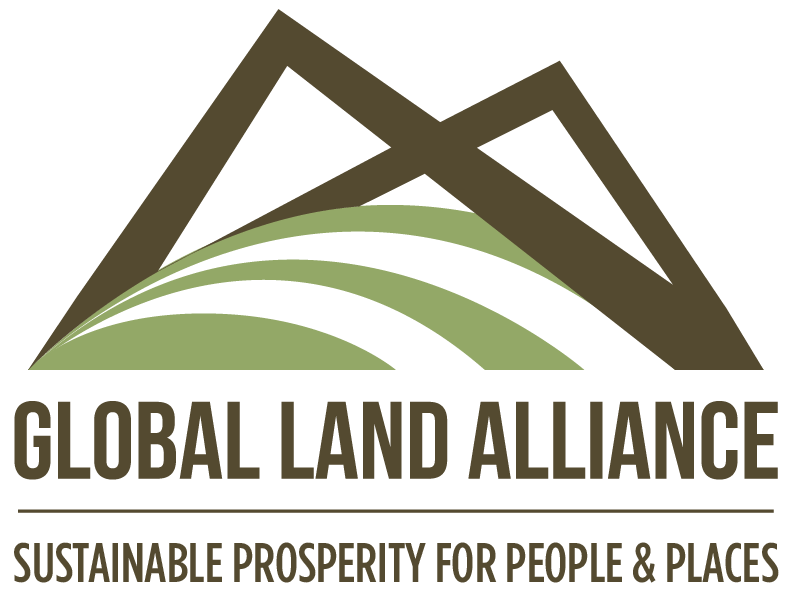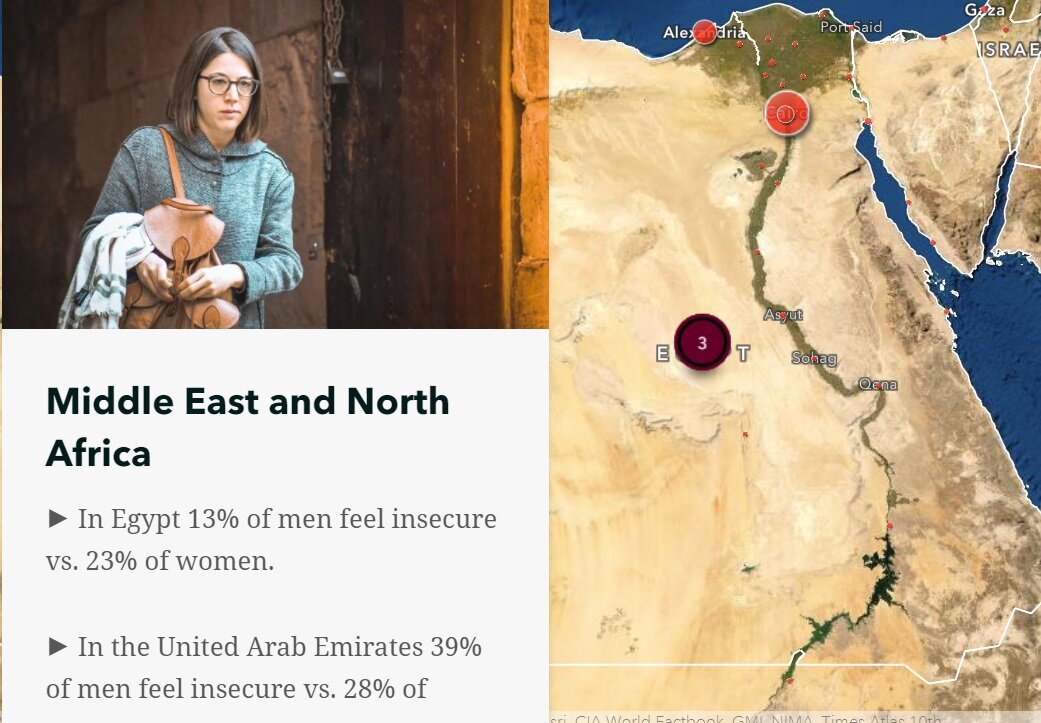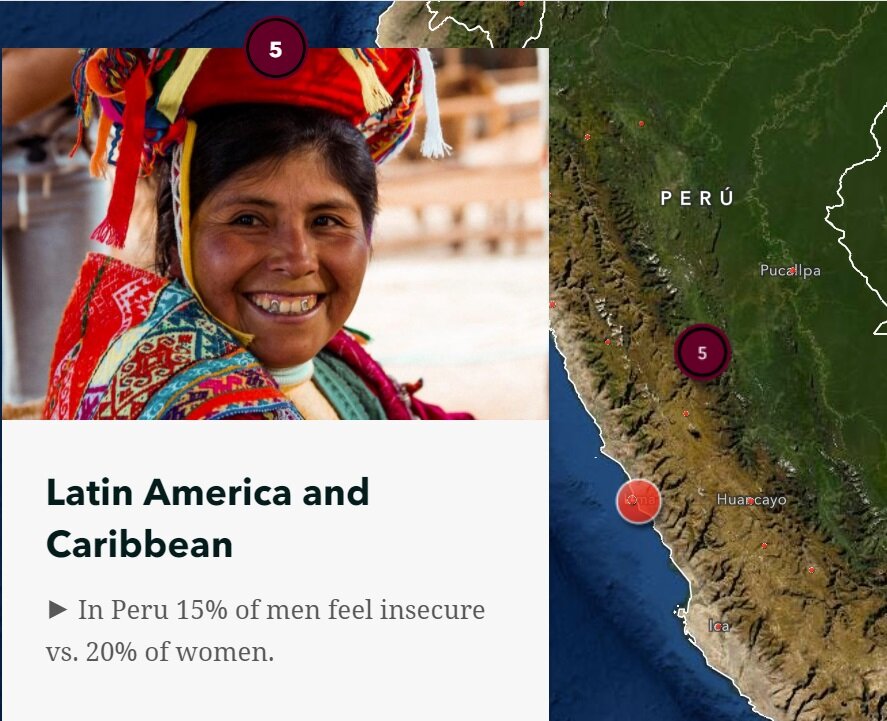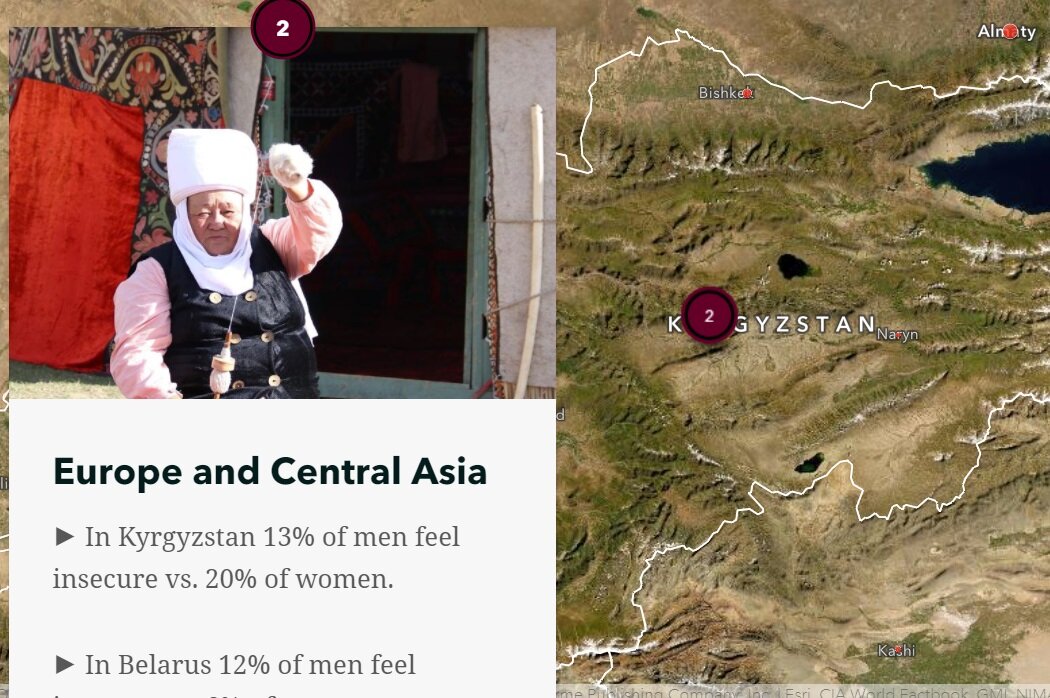Prindex Finds One Billion People Worldwide Are Insecure About Losing Their Property: Now Is The Time to Push For Accountability, Transparency and Monitoring
Prindex is the first ever measure of land and property rights that is comparable between countries and is truly global. The data demonstrates the sobering scale of insecurity in how people perceive their property rights. Prindex data and analysis opens key pathways for accountability, transparency, targeting, and, especially with global COVID-19 housing and economic crises, makes monitoring all the more important.
By Cynthia Berning and Prindex Global Team
Figure 1 Source: Economist article entitled "The Quest for Secure Property Rights in Africa " which uses Prindex comparative data for its analysis
Prindex is the world’s first global survey measuring how secure people feel in their land and property rights, contributing to the growing ecosystem of data that highlight the importance of secure rights in driving development and building a fairer world. Prindex data reveals the scale of land and housing insecurity around the world, who is likely to face insecurity and why. Astoundingly, Nearly 1 billion people around the world consider it likely or very likely that they will be evicted from their land or property in the next five years. This represents nearly 1 in 5 adults in the 140 countries surveyed. Prindex aims to equip the global land rights movement and beyond with the knowledge needed to understand the challenge and drive the changes needed to make land — and, through that, livelihoods — more secure and productive.
In the midst of a global pandemic, questions of tenure security are at the forefront of millions of people’s minds around the world; the closing of businesses and losses of jobs mean that many are struggling to pay rent and mortgages and are fearful of losing their homes. The Prindex Global Baseline data is suddenly even more timely and important than ever as we try to understand and predict how the pandemic will shape the world economy and affect vulnerable populations in all regions of the world[1]. Now is a crucial moment. As countries grapple with the global COVID-19 pandemic, ensuring people have a place to live has emerged as a frontline issue in the fight against the virus. Yet in many countries, the human and economic fallout from the pandemic will likely exacerbate longstanding weaknesses in land and housing security. Strong land and property rights for all are more urgently needed, even as they are more under threat.
Prindex Global Baseline: What can we learn from the data?
In 2015, land and property rights were recognized as an important pathway for reducing poverty and empowering women when they were placed at the heart of the Sustainable Development Goals (SDGs). Despite the recognition of how important secure land and property rights are to global development, we have not had a reliable picture of where and how they are lacking. Until now. Between 2018 and 2020, Prindex, carried out a nationally representative survey of adults in 140 countries. The result is that, for the first time, a global dataset that quantifies land and property insecurity and allows comparability between countries is now available.
Key findings from the global dataset include:
1 in 5 people fear losing their homes, this is nearly 1 billion people worldwide
Insecurity varies widely from country to country: almost half of those living in the Philippines and Burkina Faso fear they will be pushed out, compared to only around 5% in Austria, Finland, Lithuania, Singapore, and Sweden
Across all regions, renters were significantly more likely to feel insecure compared to those that own their home. 45% of renters in the Middle East and North Africa feel insecure, compared to 12% of owners; similar gaps exist in South Asia (42% vs. 13%) and East Asia and Pacific (36% vs. 8%), sub-Saharan Africa (38% vs. 17%), Latin America and the Caribbean (34% vs. 10%), Europe and Central Asia (27% vs. 5%), and North America (19% vs. 6%).
A lack of financial resources, and being asked to leave by the owner or renter, are among the leading reasons cited for feeling insecure in most countries
Regionally, average rates of insecurity are highest in the Middle East and North Africa (28%), and in sub-Saharan Africa (26%); lowest in Europe and Central Asia (12%), North America (14%), and East Asia and the Pacific (15%). Rates in Latin America and the Caribbean (21%) are in between these poles
Women’s Perceptions of Property Rights
Despite the importance of securing women’s rights to land and property, much of the research on the topic has focused only on a handful of countries, especially those where large-scale land projects are underway. To fill this gap, the Prindex provides the first truly global dataset of the perceptions of over 90,000 women and 78,400 men on tenure security in 140 countries worldwide, and has thus published a comparative report dedicated to analyzing gendered perceptions of property security.
480 million women feel insecure about their land and property rights, or 1 in 5 respondents (same as men)
Women’s insecurity is geographically concentrated. At a regional level, rates of perceived tenure insecurity are marginally higher among women than men in South Asia, sub-Saharan Africa and North America. However, considerable country-level variation exists. Countries that stand out as outliers within their regions and where a considerably higher proportion of women than men feel insecure include: Afghanistan, Kyrgyzstan, Egypt, Benin, Australia and Peru
Rates of perceived tenure insecurity are higher for certain groups of women and men than others
A higher proportion of female renters than male renters feel insecure in sub-Saharan Africa. In the Middle East and North Africa, a higher share of female owners than male owners feels insecure.
Many young women (and men) with a basic level of education feel insecure in highly developed parts of the world, such as in Europe, North America and East Asia
A particularly large proportion of married women feel insecure in parts of sub-Saharan Africa compared to married men.
Women and men cite different sources of insecurity. Men, for instance, are more likely to say that the government or companies are likely to seize their land or property – which are considered ‘external’ sources of insecurity. For married women, on the other hand, ‘internal’ sources of insecurity are more common, particularly when faced with spousal death or divorce. These differences may be closely related to prevalent methods of land acquisition. Where women are more likely to acquire land and property through marriage, they may be at a greater risk of ‘internal’ sources of insecurity from within their family or community.
Prindex Dataset
Prindex data and analysis was used by The Economist in the article “The quest for secure property rights in Africa”, Sep 12th 2020 Edition. PlaceFund further engaged with Prindex open source data by creating a story map- freely available to everyone - to highlight the importance of data in driving positive change in land and property rights. Using maps, stats, and videos, it looks at the situation in different regions around the world and paints a picture of how different groups feel about their rights - from city dwellers and renters, to women and young people. Additionally, many countries, such as the US, have adopted Prindex as the official SDG indicator for 1.4.2.
Launching the Global Baseline Dataset
The Prindex Global Baseline data launch marked the release of data for 140 countries, expanding upon the previous 33-country dataset. The launch event provided an opportunity to discuss the latest global findings and how they can contribute to a world where everyone feels secure in their land and property rights. On July 15th, land tenure professionals, government representatives, researchers, professors and civil society leaders from around the world gathered on a social-distanced webinar to discuss the Prindex global dataset and its implications for the future of the land tenure and property rights space.
Rina Chindran of the Thomson Reuters Foundation chaired the event, moderating the discussion among panelists Anna Locke, Co-Director of Prindex; Nathaniel Don Marquez of the Asian NGO Coalition for Agrarian Reform and Rural Development; Tarsicio Granizo of the World Wildlife Fund in Ecuador; Diana Fletschner of LANDESA; and Nana Ama Yirrah of COLANDEF, a land-focused NGO based in Ghana.
The launch event can be watched here:
Digging in at the Regional Level
Following the Global Launch, the Prindex team is digging deeper into the data to focus on region-specific findings and analysis. Prindex has hired four Regional Engagement Coordinators to help disseminate the Prindex data among stakeholders in each of four regions: Latin America, Middle East/North Africa, Sub-Saharan Africa, and Asia. These Regional Coordinators are planning regional events that will take place online throughout the fourth quarter of 2020 and will echo the Global Launch event, but focus more directly on the data and issues especially pertinent to that region. To accompany each regional event, a report highlighting the data and findings for the countries in each region will be published and distributed, serving as the basis for discussions.
Exploring Land Tenure Security Within Countries
Though it is useful and interesting to compare land tenure insecurity levels between different countries or regions, a single country-wide figure typically does not tell the whole story. Often there are significant differences between urban and rural insecurity, or between various municipalities or regions within a country. To explore these differences, Prindex has embarked on a series of “deep-dive” studies to test the Prindex methodology at a sub-national level. Deep dives are currently planned, or underway, in Colombia, Zambia, India and Nigeria. If these studies reveal interesting findings that are useful to national policy makers or development organizations working in these countries, Prindex hopes to roll out these deep-dives to more countries. Another goal is to make the Prindex questionnaire and methodology available for governments or universities to conduct their own Prindex-type surveys of land tenure security wherever or whenever it would assist in planning interventions or updating land policies. Prindex is exploring the possibility of pursuing this type of “franchise model” in order to facilitate the collection of land tenure security data in as many places and situations as possible.
Planning for the Next Global Survey
With the Global Baseline data having been collected immediately before the pandemic began, Prindex is well poised to track the effects of the pandemic on land tenure insecurity worldwide. Prindex is beginning to think about when to collect the next round of data, in order to capture the changes in tenure security brought on by the pandemic and various countries’ responses to it. Currently, Prindex is planning another round of data collection in 2022, with the goal of continuing to collect global data every 4 or 5 years.
[1] Data collection for Prindex was completed a couple of weeks before the global outbreak of COVID-19 began in March 2020. We consider the database as a very useful baseline for comparing the impact of COVID-19 on tenure insecurity.







